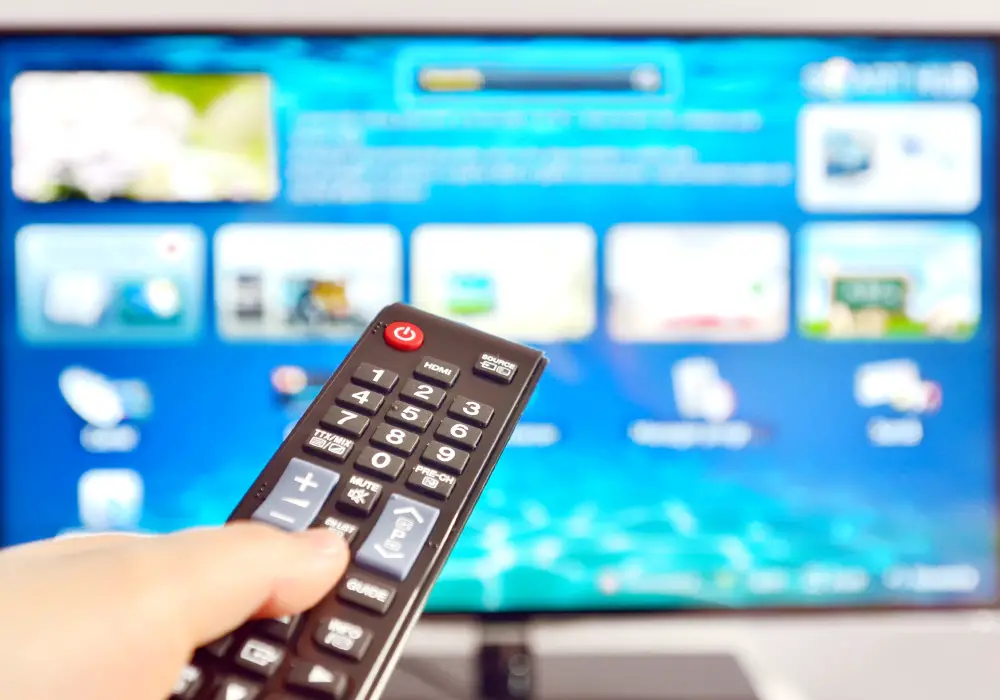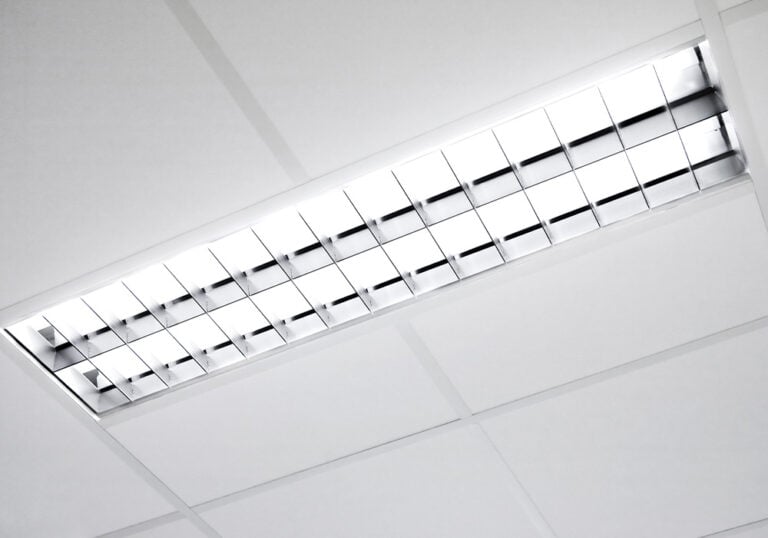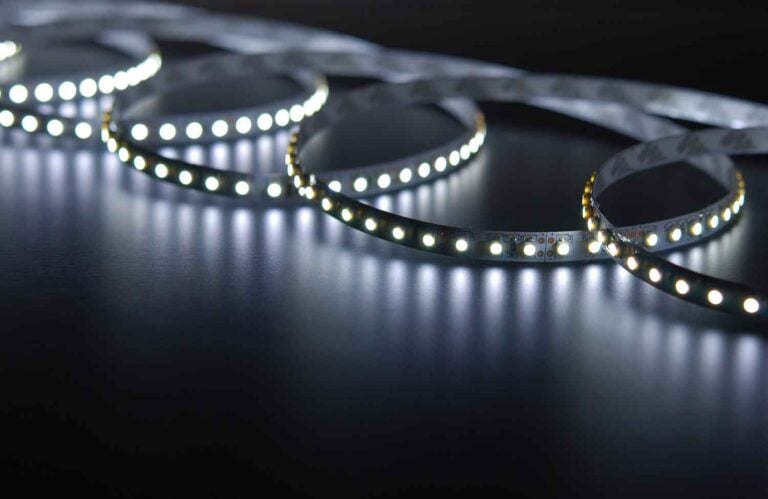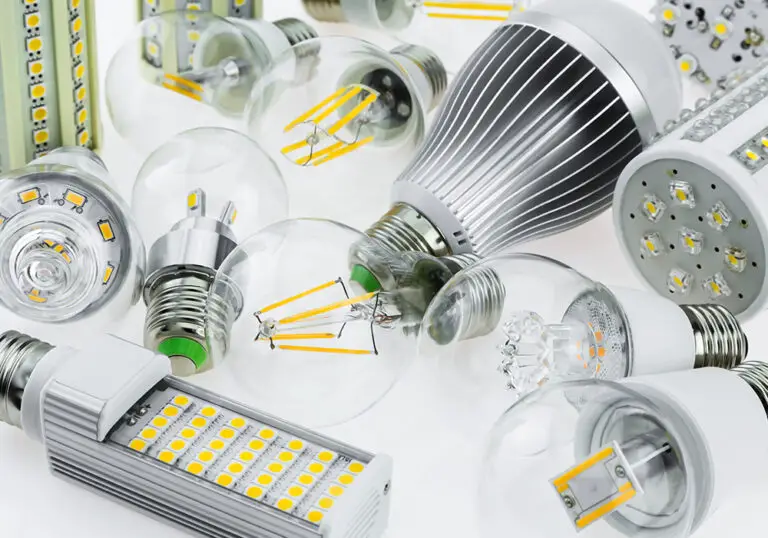How Much Electricity Does a TV Use?
Television sets have become an essential part of modern-day living. Whether you’re relaxing after a long day, catching up on your favourite series, or staying informed with the news, it’s undeniable that TVs have a significant impact on our lives. With that in mind, it’s important to understand how much electricity your TV uses, as it can help you make informed decisions regarding your energy consumption and utility bills.
Electricity usage varies depending on the type and size of the television, as well as how often it is used. By considering factors like screen resolution, screen size, and power-saving features, you can get a better understanding of the electricity consumption associated with your TV, and consequently, the potential impact on your energy bills and the environment.
Key Takeaways
- Different types of TVs have varying electricity consumption levels.
- Several factors can influence your television’s energy usage.
- Understanding TV electricity usage can help reduce utility bills and environmental impact.
What is Electricity Usage?
Electricity usage refers to the amount of electrical energy consumed by a device or appliance while in operation. It is generally measured in kilowatt-hours (kWh), which signifies the energy used by an appliance operating at one kilowatt for one hour. Understanding your TV’s electricity usage is essential for managing your energy consumption and lowering your electricity bill.
When evaluating the electricity usage of a TV, you need to consider several factors. First, the type of TV plays a significant role, as modern technologies like LED and OLED TVs consume less electricity than older models such as plasma and CRT TVs. Similarly, the size of the TV is another essential factor since larger TVs require more power.

Manufacturers often provide energy efficiency labels on their products, including televisions. These labels indicate the television’s energy consumption level, ranging from A+++ (most efficient) to G (least efficient). It’s important to check these labels when purchasing a new TV, as a more energy-efficient model will consume less electricity and save you money in the long run.
Some factors in your control also influence your TV’s electricity usage. For instance, adjusting the settings on the TV, like brightness and contrast, can lead to lower energy use. Switching off your TV instead of leaving it on standby mode can also significantly reduce energy consumption.
In summary, electricity usage depends on the TV type, size, model and the settings you apply to it. Being aware of these factors and making informed decisions can lead to better energy management and lower electricity bills.
Types of Televisions
When you consider the electricity consumption of a television, it’s essential to understand the differences between various types available in the market. To help you make an informed choice, let’s explore three commonly used types of TVs: CRT, LED, and OLED.
CRT Televisions: Cathode Ray Tube (CRT) televisions are the classic, bulky models that were popular years ago. Though still seen in some homes, CRT TVs are energy-hungry and consume considerably more electricity than their modern counterparts. So, if you’re looking for energy efficiency, CRT televisions may not be your ideal choice.
LED Televisions: Light Emitting Diode (LED) televisions arrive with improved energy efficiency compared to CRTs. Available in both edge-lit and back-lit variants, these TVs use energy-efficient LED technology to deliver bright colours and sharp images. Although back-lit LED TVs consume slightly more electricity than edge-lit versions, overall, both offer a significant reduction in energy consumption compared to CRT televisions.
OLED Televisions: Organic Light Emitting Diode (OLED) televisions represent the latest advancement in TV technology. They provide superior picture quality and consume even less power than LED TVs. This is because OLED panels produce light directly from organic compounds, eliminating the need for an energy-intensive backlight.
In summary, CRT televisions consume the most electricity, while LED and OLED televisions offer increasingly energy-efficient options. Keep these differences in mind as you decide on the right television to fit your needs and preferences.
Electricity Consumption by Different Types of TVs
LED TVs
When it comes to energy efficiency, LED TVs are a popular choice. They typically consume less power due to the light-emitting diodes used as backlighting. The energy consumption of an LED TV will depend on its size, with smaller screens requiring less electricity. On average, you can expect a 32-inch LED TV to use around 30 to 55 watts, while larger models, like a 65-inch TV, might use 60 to 120 watts. Keep in mind that these figures can vary based on factors such as brightness settings and the type of content being displayed.
LCD TVs
LCD TVs, or liquid crystal display TVs, are similar to LED TVs in terms of energy consumption. However, they use a different type of backlighting, making them slightly less energy-efficient than their LED counterparts. A 32-inch LCD TV may consume around 50 to 100 watts, while a 65-inch model could range from 100 to 150 watts. Again, these numbers may differ based on your usage and settings.
Plasma TVs
Plasma TVs are known for their excellent picture quality, but they also consume a significant amount of electricity compared to LED and LCD models. They work by using many tiny gas cells to create an image, which results in higher energy consumption. A 42-inch plasma TV can require around 90 to 150 watts, while larger screens, such as a 60-inch model, may consume 200 to 400 watts or more. If you still own a plasma TV, you should be aware that its energy usage will be significantly higher than that of newer technologies.
OLED TVs
The energy consumption of OLED TVs (organic light-emitting diode TVs) is relatively lower compared to plasma TVs but generally higher than LED TVs. OLED technology enables each pixel to produce light individually, which can lead to better energy efficiency by dimming or turning off individual pixels when needed. Typically, a 55-inch OLED TV will consume around 90 to 120 watts. However, keep in mind that energy usage can vary with factors like brightness settings and the content being watched.
In summary, different types of TVs will consume varying amounts of electricity, with LED TVs being the most energy-efficient and plasma TVs being the least efficient. When purchasing a new TV, consider the energy consumption alongside other factors like screen size, picture quality, and available features. Additionally, ensure you adjust the settings on your TV, such as brightness and power-saving modes, to optimise energy usage and reduce your overall electricity consumption.

Factors Affecting Electricity Usage of a TV
Screen Size
The screen size of your TV plays a significant role in determining its electricity consumption. Larger screen sizes typically require more power to operate. For instance, a 32-inch TV will use less electricity than a 65-inch TV, all other factors being the same.
Brightness Settings
The brightness settings of your TV also affect its electricity usage. Higher brightness levels demand more power, while lower settings help conserve energy. To reduce your TV’s energy consumption, it’s a good idea to adjust the brightness according to your room’s lighting conditions.
Time of Usage
Lastly, the time of usage is another factor that contributes to a TV’s electricity consumption. The longer you keep your TV turned on, the more energy it will consume. Therefore, being mindful of the duration of your TV usage can help reduce electricity costs. Try switching off your TV when it’s not in use or using a timer to regulate usage automatically, especially during non-peak hours.
How to Measure TV Electricity Usage
To measure the electricity usage of your TV, follow these steps:
- Determine the wattage of your TV: Check the manufacturer’s label or the TV’s user manual to find the wattage (measured in watts) of your specific model. If the manufacturer provides a range, use the average value for calculations.
- Calculate the kilowatt-hour (kWh) usage: Convert the wattage to kilowatts (kW) by dividing the number by 1,000. Then, multiply the kW value by the number of hours your TV is used each day to obtain the kWh consumption. For example, if your TV consumes 100 watts and you watch it for 3 hours a day, you can calculate the kWh usage as follows:
100 watts ÷ 1,000 = 0.1 kW 0.1 kW × 3 hours = 0.3 kWh - Determine the cost of electricity: To find the cost of your TV’s electricity consumption, multiply the kWh value by the rate per kWh on your utility bill. This will provide you with the daily cost. For example, if your electricity rate is £0.15 per kWh, you can calculate the daily cost as follows:
0.3 kWh × £0.15 = £0.045 - Calculate monthly and annual costs: To find the monthly cost, multiply the daily cost by the number of days in a month. For annual costs, multiply the daily cost by 365. For example, if the daily cost of electricity usage is £0.045, the monthly and annual costs are calculated as follows:
£0.045 × 30 days = £1.35 (monthly cost) £0.045 × 365 days = £16.425 (annual cost)
By following these steps, you can measure the electricity usage of your TV and determine how much it costs to operate on a daily, monthly, and yearly basis. Remember that the values provided are estimates, and the actual consumption may vary depending on factors such as TV usage patterns and energy-saving settings.
Reducing TV Electricity Consumption
To reduce your TV’s electricity consumption, consider implementing several strategies that can lower your energy bills and reduce your carbon footprint. You may be surprised by the impact these changes can have on your TV’s power usage.
Firstly, adjust the brightness settings of your television. A lower brightness consumes significantly less power than having it at full brightness. Most TVs come with energy-efficient settings, such as a power-saving mode or eco-mode. Enable this mode to lower your TV’s power consumption.
Secondly, turning off your television when not in use or utilising a sleep timer function is crucial in saving electricity. Don’t leave your TV on standby mode, as it still consumes power. Instead, switch it off at the mains, or invest in a smart plug that automatically turns off the power when your TV is not in use.
Taking a closer look at your TV’s power rating can be beneficial when considering a new television. Opt for models with a higher energy efficiency rating, such as those that have received certification from Energy Star or similar organisations. These TVs often consume less power than their counterparts, leading to reduced electricity consumption.
Lastly, mind the peripherals connected to your television. Game consoles, streaming devices, and sound systems all add to your TV’s overall energy usage. Be sure to turn off or unplug these devices when you’re not using them. Additionally, think about upgrading to energy-efficient devices to reduce your energy consumption further.
By implementing these strategies, you can effectively decrease your television’s power consumption, saving on energy bills and contributing to a more environmentally friendly lifestyle.
Environmental Impact of TV Electricity Usage
Your television usage contributes to the overall environmental impact on the planet. With increasing concerns about climate change, understanding the role your TV plays in this can be helpful.
Energy consumption The electricity used while watching TV generates greenhouse gas emissions, primarily carbon dioxide (CO2), at the power stations where the electricity is produced. Newer, energy-efficient models can help reduce this impact, but there’s still a cumulative effect resulting from thousands of households using TVs regularly.
E-waste As TVs reach the end of their lifespan, they often end up as electronic waste (e-waste), which can cause environmental problems if not properly disposed of. Discarded TVs may contain toxic substances like lead, mercury, and flame retardants. If these TVs are not recycled properly, these substances can end up in landfill sites and eventually, in the environment.
Standby mode Many TVs continue to use power even when they’re switched off, adding to their overall environmental impact. In the UK, it’s estimated that standby power use accounts for up to 8% of all domestic electricity consumption. Making sure to switch your TV off completely can help reduce this usage.
Considerations for reducing impact
- Upgrade to a more energy-efficient model: Modern TVs are much more energy-efficient than older models. Replacing your old TV with a new LED or OLED screen can help to reduce your energy consumption and the associated environmental impact.
- Recycling: Ensure that your old TV is properly recycled to prevent harmful substances from seeping into the environment. Many local authorities and electronic shops offer recycling services for old appliances.
- Adjust settings: Optimise the screen brightness, contrast and picture settings of your TV. Lower brightness settings can reduce energy consumption, while features like sleep timers and automatic volume control can further aid in minimising electricity usage.
By being aware of your TV’s electricity usage and implementing the suggestions above, you can help in reducing the environmental impact associated with television use.






